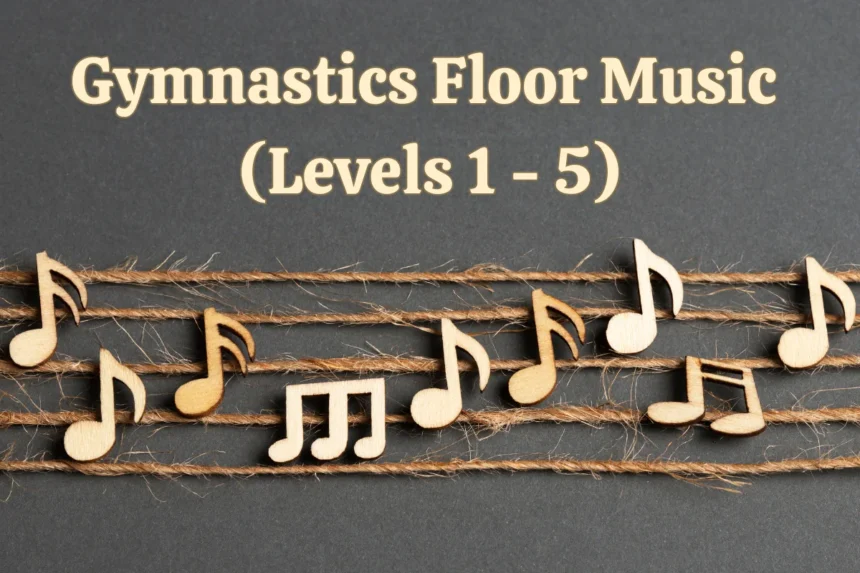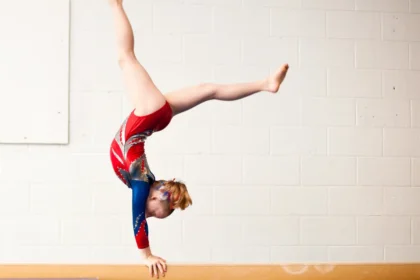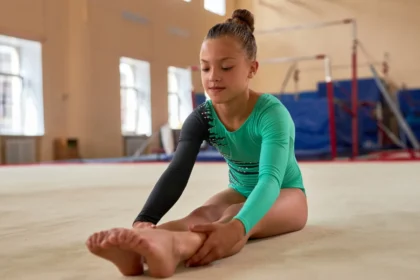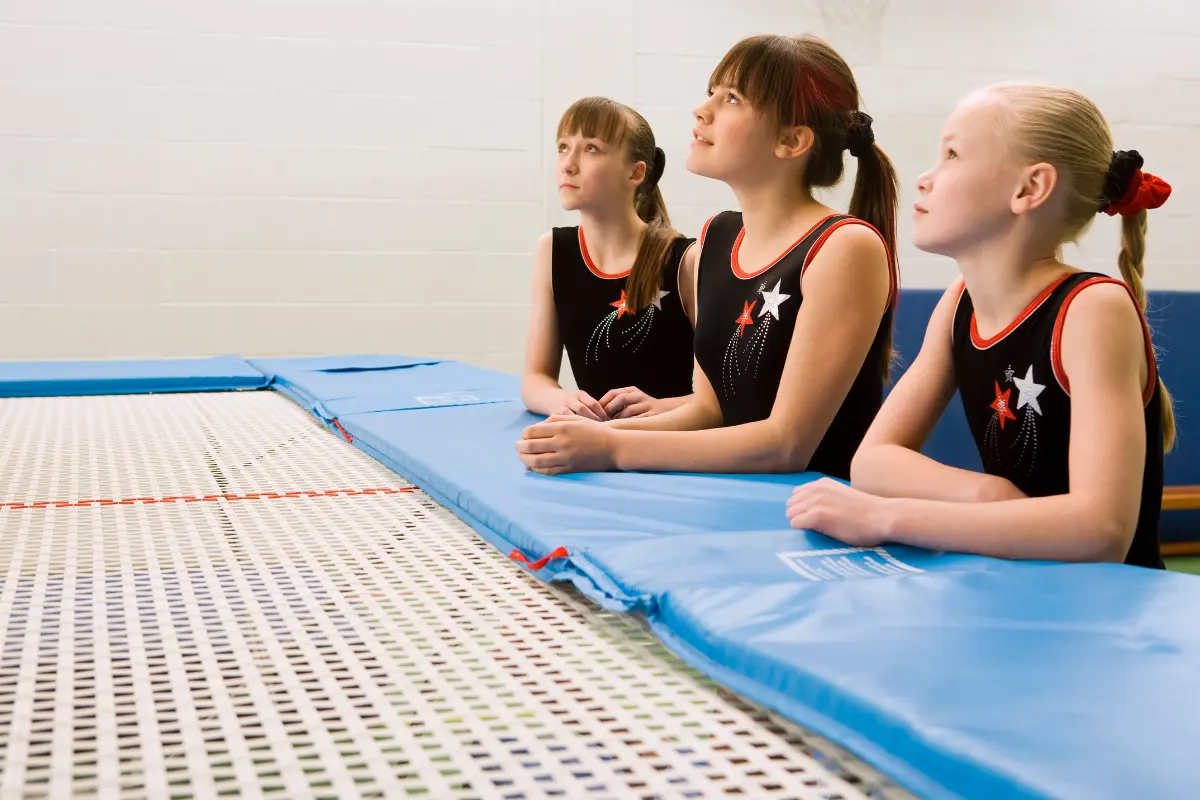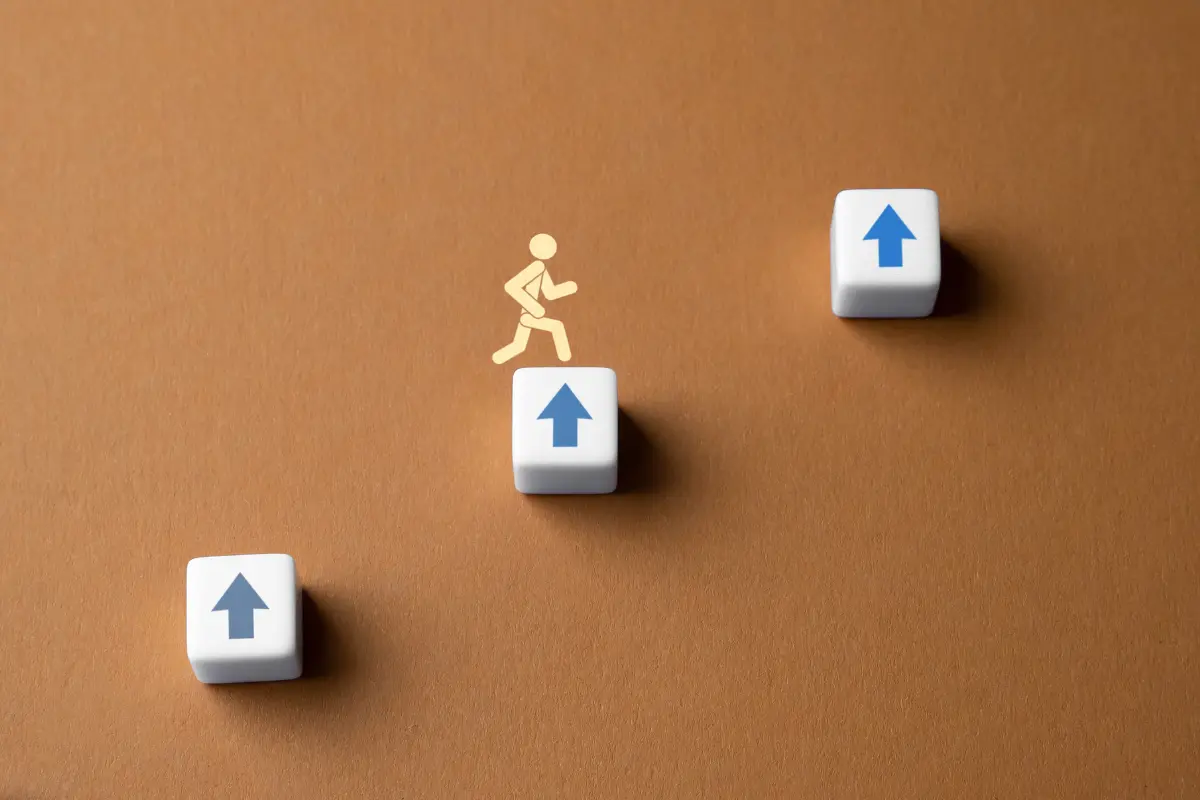In the USAG Development Program, Levels 1 through 5 are referred to as compulsory levels. That means gymnasts across the country perform the exact same floor routine at each level, with every pose, movement, and step choreographed by USA Gymnastics.
Because the routine is standardized, so is the music. You do not need to select or purchase floor music for Levels 1 to 5. The floor music is pre-selected by USA Gymnastics and remains the same for all athletes at each level during the competition season.
Universal Rules for Levels 1–5 Floor Music
Before anyone worries about cutting, looping, or remixing a track, it’s important to understand one key idea: the compulsory side of the U.S. Development Program is meant to be identical nationwide.
From the opening salute to the final pose, everything—including the music—must follow strict guidelines. That consistency relies on the non-negotiable floor music rules every coach, parent, and meet DJ should know.
1. One Track—No Edits
USA Gymnastics issues a single, pre-timed track for each compulsory level. That’s the only file allowed in competition. Even using a similar-sounding instrumental or a “clean” version from another source is considered competing without official music—a violation that carries a flat 1.00 deduction. The Chief Judge will take the deduction the moment an unauthorized file starts playing.
2. Absolutely Lyric-Free
Starting with the 2024–25 season, any trace of a human or synthetic voice—spoken words, chants, humming, or atmospheric vocals—will trigger the same 1.00 penalty. This applies at every Development Program and Xcel meet and will remain in effect through the end of the 2021–2029 compulsory cycle.
3. Two Versions Included
Each level’s official bundle includes:
- A Training track with verbal count-ins (“one-two-three-four…”), and
- A Competition track that’s clean and silent.
It’s fine to use the Training version during practice or mock meets, but it must be switched out before any sanctioned competition. Most gyms make the transition at least two weeks out to help gymnasts stop relying on the verbal cues.
4. File Length vs. Routine Time Limit
The official music files are usually a few seconds longer than the routine’s judged time limit, allowing for a natural fade-out in a large arena. But judges don’t time the file—they time the gymnast.
The stopwatch starts with the gymnast’s first movement and ends with her final pose. As long as she salutes within the official time cap (e.g., 0:30 for Level 1, 0:35 for Level 2, etc.), it doesn’t matter if the last notes of the music are still ringing.
5. Allowed Formats and Playback Rules
According to USAG Rules & Policies, music must be played from a digital source—this includes:
- MP3 players
- Smartphones
- Tablets
- Laptops
All devices must have a visible screen, be set to airplane mode, and Bluetooth streaming is not allowed. That means no Spotify, YouTube, or other internet-reliant services at meets.
💡 Best Practice: Always bring two backups—one on a USB drive and one downloaded directly to a device. A dead battery or corrupt file shouldn’t ruin your gymnast’s rotation.
7. Where to Get the Official Tracks
All five levels of compulsory floor music are included in the W316 Compulsory Materials Course, available through USA Gymnastics. When purchased, you get:
- DRM-free WAV or MP3 downloads
- Streaming access via Spotify, Apple Music, YouTube Music, and Amazon Music
While streaming is great for practice, meets require a locally saved file that the DJ or sound tech can cue instantly.
8. No Creative Edits, Fades, or Remixes
The Code of Points doesn’t spell out every possible tweak—but most meet directors go by a strict “official only” rule. Even simple changes like adjusting volume, trimming the intro, or adding applause could be flagged as an alteration. If the fade-out feels long in a small gym, teach your gymnast to hold their final pose rather than shortening the track.
9. Meet Day Music Protocol
Music etiquette is standard at all competitions:
- Label your thumb drive as “Level X – Competition”
- Hand it to the sound table before warm-ups
- Confirm the file plays at the right volume
If something goes wrong after the salute—like the wrong track playing or the speakers cutting out—the gymnast is allowed one restart without penalty. But if the issue happens before the gymnast begins moving, it’s on the coach—and the clock keeps ticking.
Level-by-Level Snapshot: What the Floor Music Sounds Like
Each level in the USAG compulsory program has its own carefully crafted floor music—designed to match the routine’s structure, skill level, and pacing.
Level 1 – 0:33 Track · 0:30 Limit
🎶 Jaunty march in C-major
A bright and steady 4/4 piano march introduces first-year gymnasts to musical timing. Two eight-count phrases frame a quieter middle section, giving athletes space to breathe between chasse steps and cartwheels. A playful trill at 0:20 cues the half-turn and forward roll. The music ends with a gentle fade, so teach athletes to hold their final relevé confidently rather than expecting a dramatic finish.
Level 2 – 0:43 Track · 0:35 Limit
🎶 D-major with snare accents at ~114 BPM
This track builds complexity with a light snare beat layered over a string motif. The soft opening pairs well with the step-kick sequence, while a swell at count 17 aligns with the cartwheel-to-split. A brief slowdown at 0:32 supports a controlled backward roll. Since the music runs 8 seconds longer than the judged limit, athletes should learn to finish confidently on the final forte chord—even if the music keeps playing.
Level 3 – 0:53 Track · 0:55 Limit
🎶 Energetic G-major at ~118 BPM with A–B–A’ form
This track marks a leap in expressiveness and structure:
- A section (counts 1–16): Staccato piano for lunge-pivot and handstand bridge.
- B section (17–32): Legato strings soften the mood during round-offs.
- A’ return (33–48): Brings melody and percussion for straight jump ½ turns.
- Final tag (49–64): Four bold beats followed by a diminuendo—ideal for the final pose.
Level 4 – 1:06 Track · 1:05 Limit
🎶 Driving E-minor score at ~122 BPM
Level 4 introduces stronger rhythmic drive. Low tom hits on alternating measures act as a built-in metronome for front handsprings and leap series. A brief instrumentation drop during measures 9–12 highlights the punch-front. The track builds with a brass fanfare into the closing dance passage. Instruct athletes to finish slightly before the final beat to avoid overrunning the time limit.
Level 5 – 1:10 Track · 1:10 Limit
🎶 Dark F-minor with syncopation at ~126 BPM
This track introduces emotional contrast and advanced musical cues. A syncopated snare drives the early sections leading to the back handspring step-out. A key change to A-flat major brightens the tone for leaps and turns before returning to the original minor theme to accompany the front tuck. A cymbal crash at 1:07 serves as the final time cue—athletes must salute promptly to stay within the limit.
⏱️ Note: Judges start timing when the gymnast makes their first movement, not when the track begins. Rehearsing precise count-ins (usually two silent 8-counts) helps gymnasts stay aligned with the track and avoid time violations.
Nail the basics now, and by the time optional levels roll around, your athlete will already have the musicality—and the discipline—to handle that full 90-second masterpiece.





